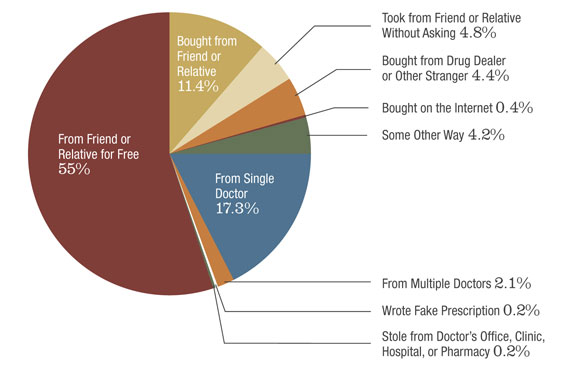
Dr. H. Westley Clark presenting the NSDUH findings at the annual Recovery Month Press Conference.
National Survey Shows Rise in Illicit Drug Use
The use of illicit drugs among Americans increased between 2008 and 2010 according to SAMHSA's National Survey on Drug Use and Health (NSDUH). According to the annual survey, 22.6 million Americans 12 and older (8.9 percent of the population) were current illicit drug users. The rate of use in 2010 was similar to the rate in 2009 (8.7 percent), but remained above the 2008 rate (8 percent).
An increased rate in the current use of marijuana seems to be one of the prime factors in the overall rise in illicit drug use. In 2010, 17.4 million Americans were current users of marijuana, compared to 14.4 million in 2007. This represents an increase in the rate of current marijuana use in the population 12 and older from 5.8 percent in 2007 to 6.9 percent in 2010.
Another disturbing trend is the continuing rise in the rate of current illicit drug use among young adults aged 18 to 25 — from 19.6 percent in 2008 to 21.2 percent in 2009 and 21.5 percent in 2010. This increase was also driven in large part by a rise in the rate of current marijuana use among this population.
The survey, released by SAMHSA at the kickoff of the 22nd annual National Recovery Month observance, also shows that use rates for nonmedical use of prescription drugs, hallucinogens and inhalants have remained at approximately the same levels as 2009, and are also similar to rates in 2002.
"We stand at a crossroads in our Nation's efforts to prevent substance abuse and addiction," said SAMHSA Administrator Pamela S. Hyde, J.D. "These statistics represent real lives that are at risk from the harmful and sometimes devastating effects of illicit drug use. This Nation cannot afford to risk losing more individuals, families and communities to illicit drugs or from other types of substance abuse — instead, we must do everything we can to effectively promote prevention, treatment and recovery programs across our country."
Among the survey's other noteworthy findings is that the majority (55 percent) of persons aged 12 and older who had used prescription pain relievers nonmedically in the past 12 months received them from a friend or relative for free. Only 4.4 percent of those misusing pain relievers in the past year reported getting their supply from a drug dealer and 0.4 percent bought it on the Internet.
Despite some troubling trends, the 2010 NSDUH showed areas of improvement in terms of lower use levels for certain substances. The number of current methamphetamine users decreased by roughly half from 2006 to 2010 — from 731,000 people age 12 and older (0.3 percent) to 353,000 (0.1 percent). Cocaine use has also declined, from 2.4 million current users in 2006 to 1.5 million in 2010. In addition, among 12- to 17-year-olds there were decreases between 2009 and 2010 in current drinking rates (from 14.7 percent to 13.6 percent) and current tobacco use rates (from 11.6 percent to 10.7 percent).
As in previous years, the 2010 NSDUH shows a vast disparity between the number of people needing specialized treatment for a substance abuse problem and the number who actually receive it. According to the survey, 23.1 million Americans aged 12 and older (9.1 percent) needed specialized treatment for a substance abuse problem, but only 2.6 million (or roughly 11.2 percent of them) received it.
For more information on the 2010 National Survey on Drug Use and Health, visit https://nsduhweb.rti.org/.

Source: 2010 National Survey on Drug Use and Health